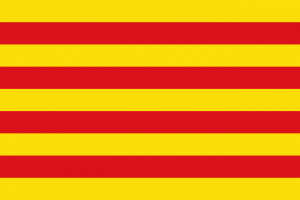Language/Catalan/Culture/Catalan-celebrations,-traditions-and-customs
As a Catalan language teacher with 20 years of experience, I believe that learning about a region's culture is just as important as learning its language. In this lesson, we will explore the vibrant and diverse Catalan celebrations, traditions, and customs that infuse everyday life in this unique region.
With the completion of this lesson, consider investigating these related pages: The geography and history of Catalonia & Major artists, architects, and musicians.
Popular Festivals and Holidays
Catalonia boasts a rich and varied calendar of festivals and holidays throughout the year. These festivals offer a glimpse into Catalan culture and traditions and are often an opportunity for communities to come together and celebrate.
One of the largest and most famous festivals is La Mercè, which takes place every year in Barcelona, the capital city of Catalonia. This festival spans several days and is a celebration of Catalan culture, music, and traditions. Another major festival is the Festa Major de Gracia, which takes place in Gracia, a neighborhood in Barcelona. During this festival, the streets are adorned with elaborate decorations, and live music and street processions are a common sight.
The Carnival, or Carnestoltes, is another popular festival in Catalonia. It takes place in various cities and towns across Catalonia and typically involves costumes, parades, and large-scale street parties. During the Carnival, it is common to see people dressed up in colorful costumes and masks, and traditional Catalan foods such as coca de llardons (a savory pastry made with pork) are often enjoyed.
Other major festivals in Catalonia include Sant Jordi (celebrated on April 23rd), which honors the patron saint of Catalonia, and the Fira de Santa Llúcia, a Christmas market that takes place in Barcelona and is known for its elaborate nativity scenes.
Customs and Traditions
Catalonia has a number of unique customs and traditions that have been passed down through generations. One of the most well-known traditions is the castell, or human tower. Castells are typically performed during festivals and involve groups of people standing on each other's shoulders to create a tower. These towers can be several stories tall, and are often accompanied by live music and cheering crowds.
Another popular Catalan tradition is the caga tió, or “pooping log.” This is a Christmas tradition in which a wooden log (often decorated with a smiling face) is brought into the home and “fed” small treats each day. On Christmas Eve, the log is beaten with sticks while the family sings a traditional song. The log then “poops” out small presents and candies for the children.
Catalonia is also known for its traditional dances, such as the sardana. The sardana is a type of circle dance that is often performed during festivals and celebrations. A live band plays traditional Catalan music, and the dancers link hands and move in a circular pattern to the rhythm of the music.
Traditional Catalan Foods
Catalonia has a rich culinary tradition that is influenced by both Mediterranean and European cuisine. Catalan cuisine is known for its use of fresh, seasonal ingredients, and its love of seafood, meats, and rich sauces.
One famous Catalan dish is pa amb tomàquet, a simple yet delicious way of serving bread with fresh tomatoes, olive oil, and salt. This dish is often served as an appetizer or as a accompaniment to other dishes.
Catalonia is also known for its vast selection of cured meats, such as llonganissa and fuet, which are often served as part of a charcuterie board. Other popular dishes include suquet de peix (a fish and seafood stew) and botifarra amb mongetes (a hearty sausage and bean stew).
Conclusion
In conclusion, learning about Catalan celebrations, traditions, and customs is an important part of understanding the vibrant and unique culture of this region. These celebrations offer a glimpse into the past and provide opportunities for communities to come together and celebrate.
Keep an eye out for festivals and traditions in your community and take the opportunity to learn more about the culture and traditions of Catalonia. Buena sort! (Good luck!)
Now that you've completed this lesson, don't stop learning! Check out these related topics: Traditions and Celebrations & Catalan cinema and popular culture.
Other Lessons
- Catalan identity and linguistic activism
- Major artists, architects, and musicians
- Andorra History
- The geography and history of Catalonia
- Catalan cinema and popular culture
- Major writers, poets, and literary works
- Artistic movements and traditions in Catalonia
- Catalan cuisine and gastronomy
- Modern Catalan history and politics

